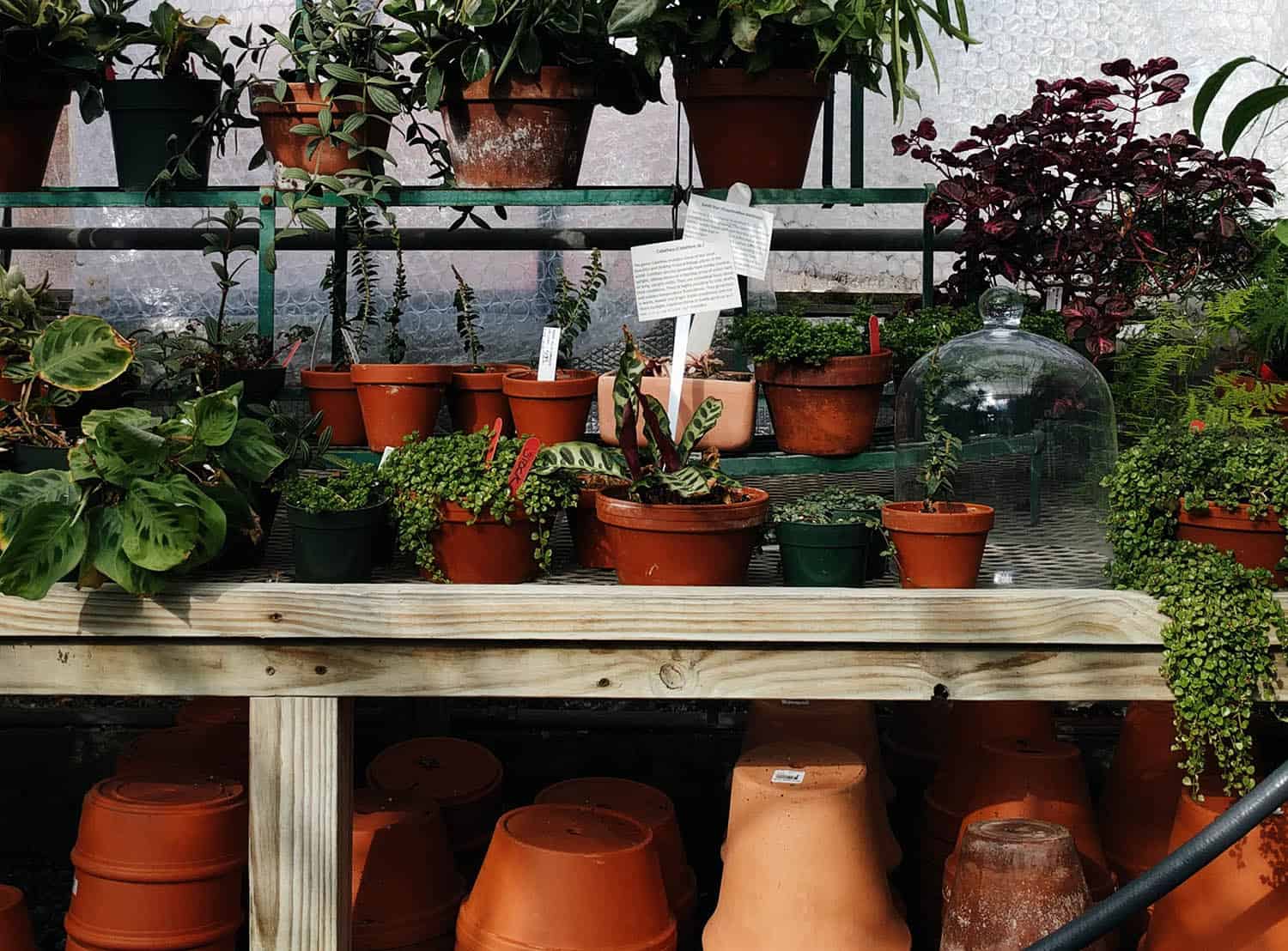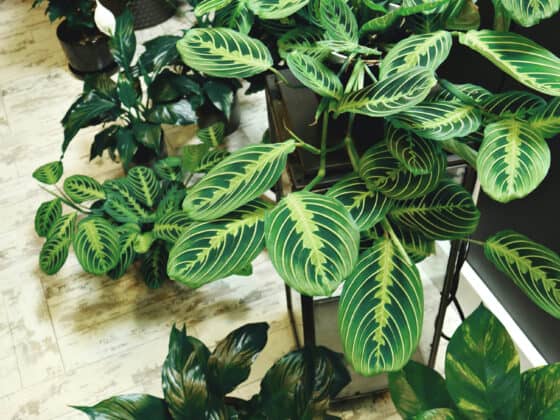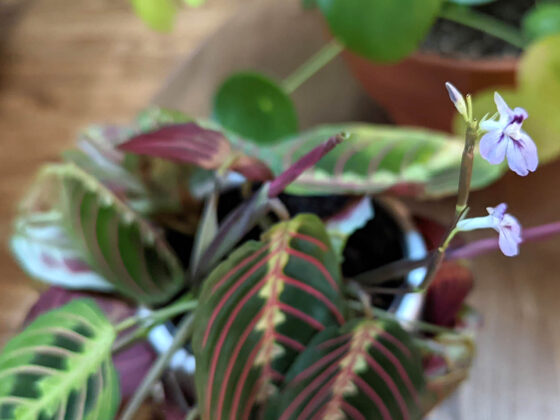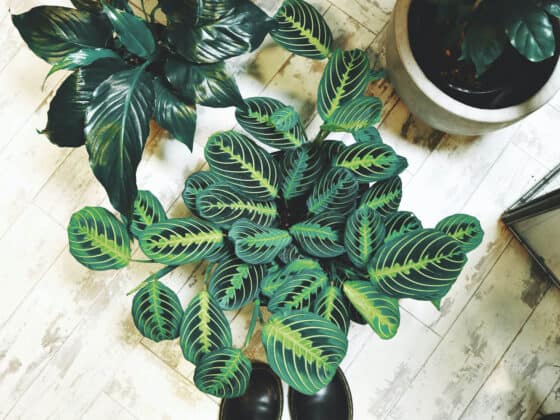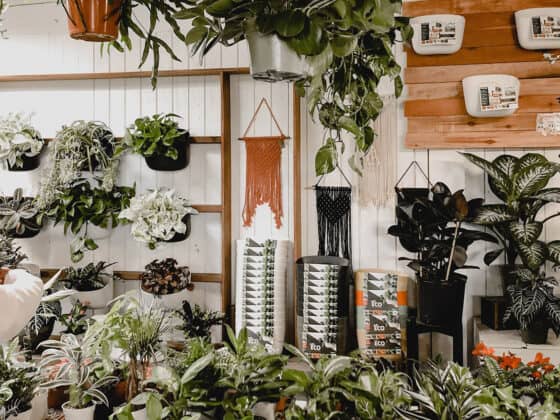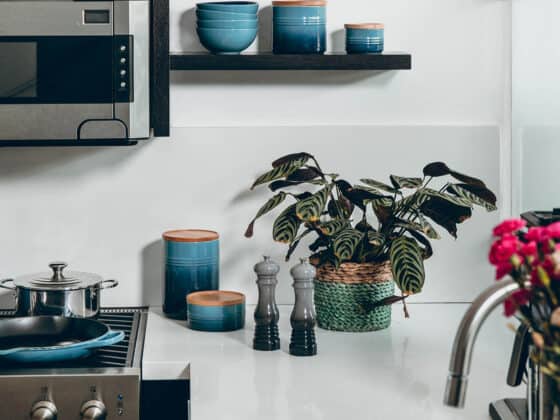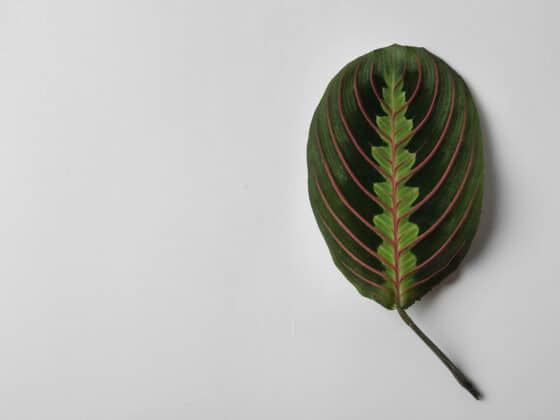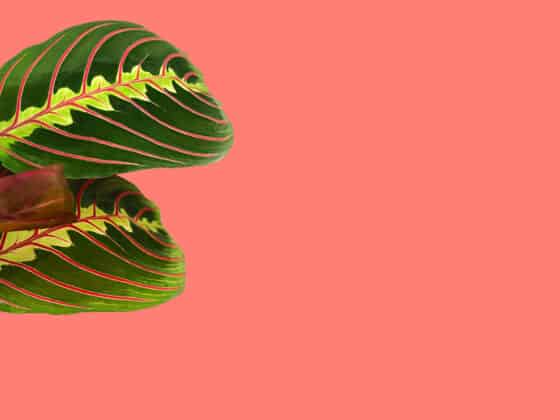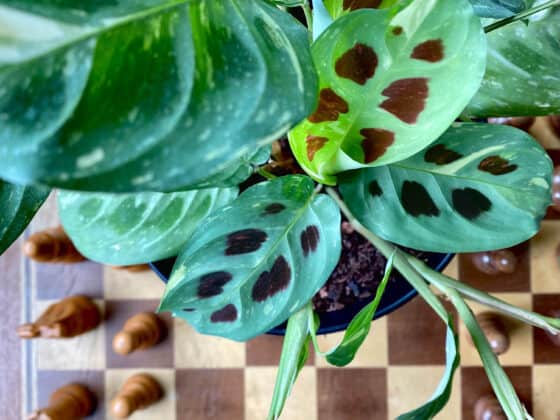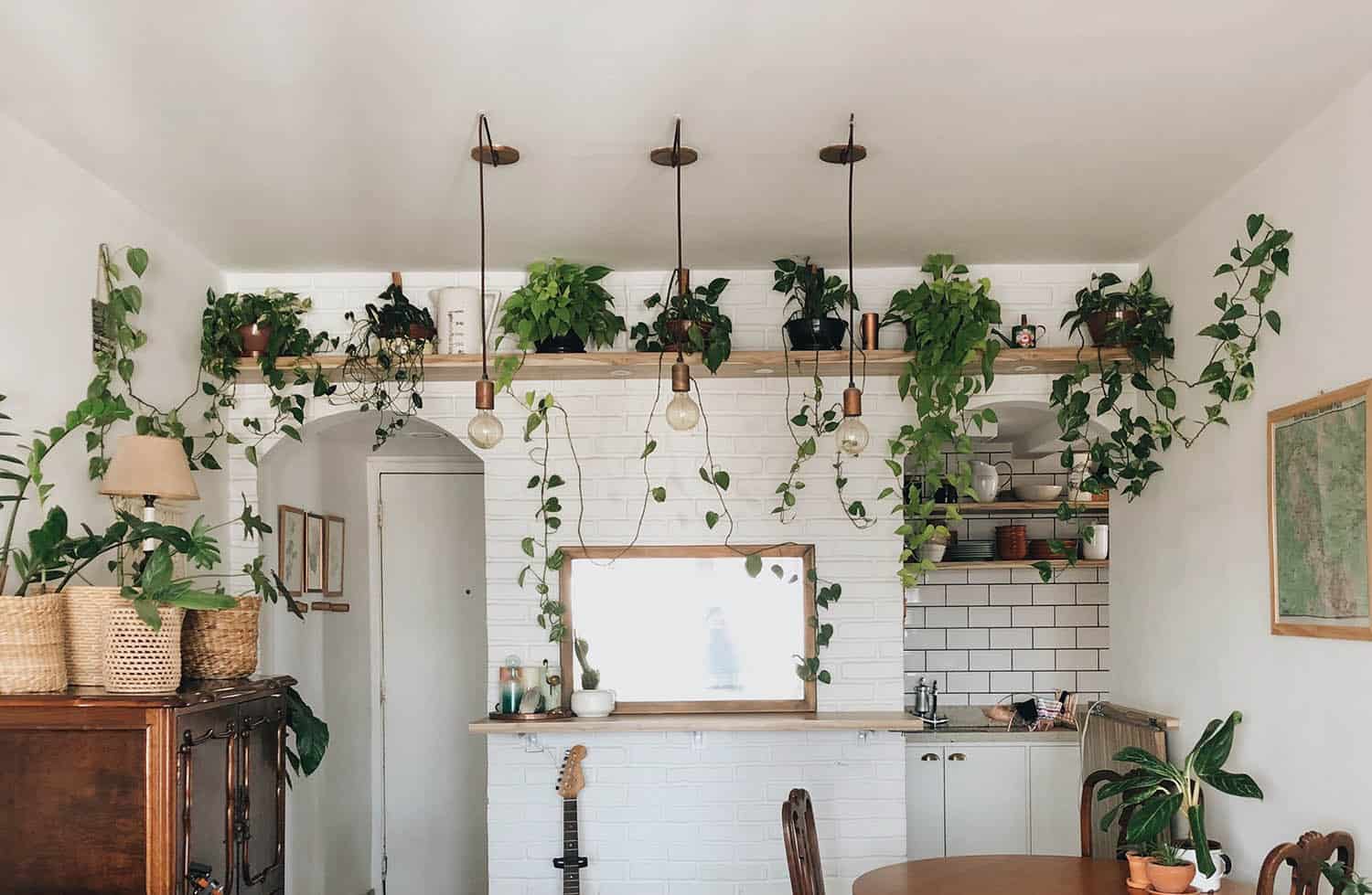Prayer Plants (Maranta leuconeura) are prized houseplants for their boldly patterned, oval leaves that look like they’ve had their designs painted on. They are perfect for adding a splash of color and interest to the home and can do well in lower-light areas that are too dim for other tropical plants. But Marantas are prone to their fair share of problems, including curling leaves.
What causes Prayer Plant leaves to curl? Several things can contribute to curled leaves, but the most common issues have to do with watering, sunlight, or humidity. By mimicking a Prayer Plant’s natural rainforest habitat, we can avoid curled leaves and help Marantas to thrive in our homes.
Prayer Plants are native to the tropical forests of South America. And they have certain needs that should be met to keep them looking their best when they are being grown indoors. A healthy Prayer Plant’s leaves will be flat during the brightest parts of the day and then fold up and in after the sun goes down.
The Most Likely Reasons Your Prayer Plant Is Curling
The steps you’ll take to remedy your curling leaves will depend on what is causing this reaction from your Prayer Plant. Below are the most common reasons that Prayer Plants have curled leaves. Read on and diagnose your cause before taking action to fix it.
POOR WATERING HABITS – When Maranta leaves curl, it’s most likely related to water issues – either too much or too little. I will cover proper watering in the section below, but the simple version is that Prayer Plants can be unforgiving if they get too much or too little water. Both of these situations can cause leaves to curl, so it is best to keep the soil consistently moist but not wet.
POOR WATER QUALITY – Water quality can also cause curling leaves. I always recommend rainwater for watering potted plants because it is closest to what they would get in nature. Plus, it avoids things that are bad for plants, like fluoride, chlorine, and salt that are found in tap water. These can build up in the soil and cause the leaf tips to turn brown and curl.
If you cannot collect rainwater, you could use distilled water, aquarium water, or (at minimum) let your tap water sit for a while, so some of the chemicals evaporate before you use it. These things will go a long way towards helping you achieve those bright, flat leaves that Prayer Plants are known for.
EXPOSURE TO COLD – If watering and water quality aren’t the issue, curling Prayer Plant leaves could result from the plant getting too cold. Marantas will show a reaction to cool temperatures or drafts. Since they come from warm, humid environments, Marantas don’t like to get cold. Average indoor temperatures are perfect, but keep this plant away from open windows.
PEST PROBLEMS – Insects that feed on plants could also cause leaves to curl. Those that damage the plant’s cells by sucking nutrients from the leaf are most likely to cause this appearance in the leaves. Check your plant carefully for aphids, scale, or any other pests to rule this out. If you find any, neem oil is effective against all of these insects after a few treatments.
HUMIDITY OR DIRECT LIGHT– Finally, lack of humidity or too much direct sunlight can result in curling leaves, but usually in combination with other, more pronounced symptoms. In these cases, you would probably also see brown, crispy edges on the leaves and potentially areas of discoloration—Prayer Plants like indirect light and higher-than-average humidity.
Things To Consider Before You Change Your Care Routine
There are two occasions when your Prayer Plant might be curling that should be zero cause for concern: natural movement and new leaves. Before you jump to the conclusion that your Prayer Plant is unhealthy, make sure the curl is not a result of one of these two things.
The common name of Maranta leuconeura comes from its leaf movement that resembles praying hands as the leaves raise up and come together. This movement is completely natural and is not a cause for concern. In fact, it’s one of the most charming and distinctive traits of Prayer Plants.
Check your plant in the middle of the day to see if it has flattened its leaves. You should see them almost perfectly flat around mid-afternoon. If the leaves are still curled, it is probably not because of the plant’s natural movement, so you should do some more investigation about the potential cause.
Also, remember that new Prayer Plant leaves emerge tightly rolled up and slowly open up over the course of a couple of weeks. Until the new leaf is completely unfurled, it may appear to have curling edges. It is usually easy to identify new leaves as their color will be pale compared to the more mature parts of the plant. This type of curling leaf is just part of a Prayer Plant’s natural growth and does not indicate any problem.
The Best Light for Prayer Plants
Maranta leuconeura, in its native habitat, grows low to the ground under a canopy of tropical trees. Given those origins, it does not need or want to be situated in a location that gets a lot of direct sun. Maranta leaves are very thin and delicate, so they can quickly become sunburned if they get too much sunlight.
Sunburnt Prayer Plants can develop brown spots on the leaves, curling leaves, and loss of color. If you suspect your Maranta is getting too much sun, try moving it to a shadier place and cut off any damaged leaves. The ideal light for Prayer Plants will be in an east- or north-facing windowsill or a few feet back from a window that gets more intense sun.
This plant is sometimes marketed as being suitable for low-light areas, and it is somewhat low-light tolerant. But if you try to grow a Prayer Plant in a dark corner, it will not thrive. You will likely see it get leggy as it tries to grow toward the light source, and it will be much slower to develop new growth.
Proper Watering Habits for Prayer Plants
Watering is probably the single most challenging thing to get right for Marantas. They prefer not to dry out too much, and without enough moisture, the edges of the leaves (farthest from the water-absorbing roots) will show the first signs of dehydration. If the soil feels dry or you forgot about your Prayer Plant for a couple of weeks, this is the most likely explanation for leaf curl. A thorough watering should help it return to normal.
Confusingly, adding too much water can also cause Prayer Plant leaves to curl. Overwatering usually comes with some other symptoms like drooping, soft stems, and yellowing leaves, so look for those clues when diagnosing an overwatered Maranta. You may also want to remove it from the pot to check the roots for rot if you suspect too much water to be the issue.
Keep in mind that you will likely need to adjust your watering for the season. Marantas use up more water during their active growth in the spring and summer. When their activity slows during the cooler months, be sure not to accidentally overwater. Evaporation slows when temperatures drop, so adjust your watering accordingly.
Depending on the season, temperature, and size of your plant’s pot, the watering schedule can vary quite a bit. Instead of trying to stick with a strict schedule, use a moisture meter (or the original
Final Thoughts
Curling leaves on a Prayer Plant can be dramatic and alarming, especially since several problems can cause this symptom. Often, Prayer Plant leaves start curling due to some water issue, but there are several other possibilities. It is important to keep a close eye on your plant and check it often, so you can catch any potential problems as soon as possible.
As with most of our indoor plants, Maranta leuconeura is mainly tolerant of the typical household environment-which is why so many people enjoy growing and collecting plants from this family. But some plant owners experience issues with Marantas and similar plants, which can include dry and curling leaves.
A thorough understanding of the native conditions where Prayer Plants grow should help you to pinpoint why the leaves are curling, and then you can set about making it right. Even if you lose some leaves in the process, Marantas can generate new growth quickly, so don’t give up! You should be able to grow a beautiful specimen with some simple adjustments to its environment.






